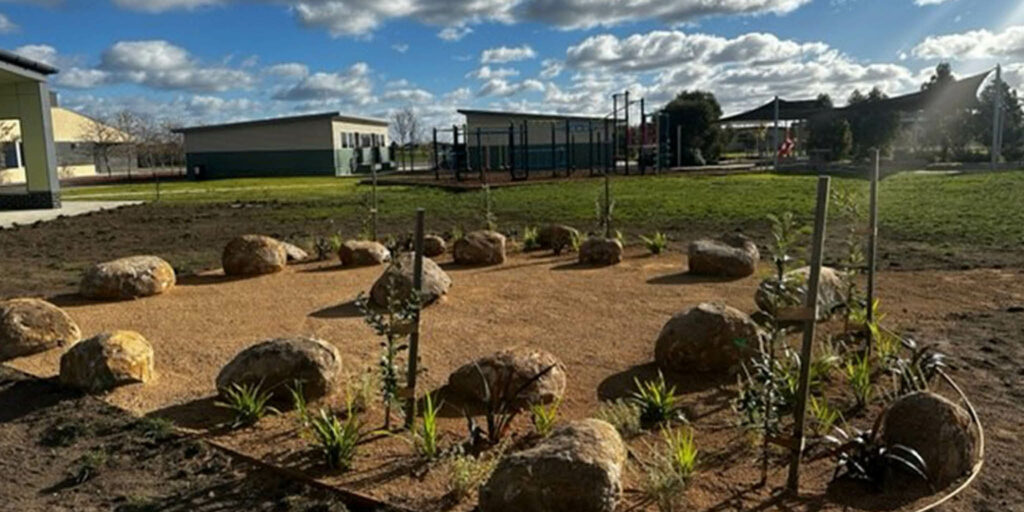Lucas Primary have recently installed a Yarning Circle. This idea has grown from a Koorie Champion meeting with the schools Aboriginal families. A grant was awarded to the school to assist with building a culturally aware environment. The school also teamed up with Integra to have some local rocks delivered onsite for the seating. The school looks forward to having this space available to students in Term 3 and we look forward to the design being further developed over the years.

What is a Yarning Circle
A Yarning Circle is a place to talk, share, discuss, educate and have a yarn together; a place to build respectful relationships and a space to enrich students’ learning experiences.
Circle Formation
The participants sit in a circle, often on the ground or on mats. The circle formation symbolises equality, respect, and inclusivity, where everyone has an equal voice and can see each other.
Central Fire or Fire Pit
In some traditional yarning circles, especially in Aboriginal cultures, a central fire or fire pit might be present. The fire is significant as a source of warmth, light, and ceremonial importance. It can also serve as a focal point for storytelling and discussions.
Ground Covering
Mats, rugs, or natural materials like leaves or grass might be used to cover the ground within the circle, providing comfort and insulation.
Ceremonial Objects
Depending on the purpose of the yarning circle and the cultural traditions involved, there may be ceremonial objects present such as carved wooden objects, woven baskets, or symbolic items that hold cultural significance.
Natural Surroundings
Yarning circles often take place outdoors or in settings that are close to nature, such as under trees or in open spaces. The natural surroundings contribute to the atmosphere of connection with the land and environment.
Symbols or Markings
Sometimes, symbols or markings on the ground or on objects within the circle can have specific meanings related to the stories being shared or the cultural context of the gathering.
These physical elements are not universal across all Indigenous Australian cultures but represent common features that contribute to the ceremonial, communal, and cultural significance of a yarning circle. The specifics can vary widely depending on the particular Indigenous community, its traditions, and the purpose of the gathering.